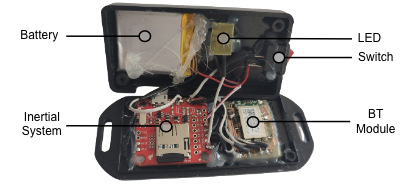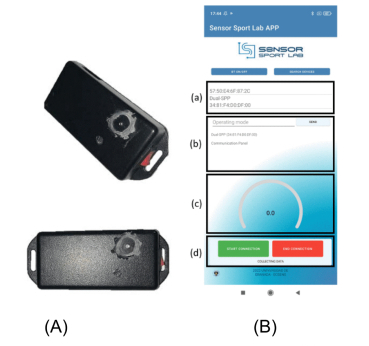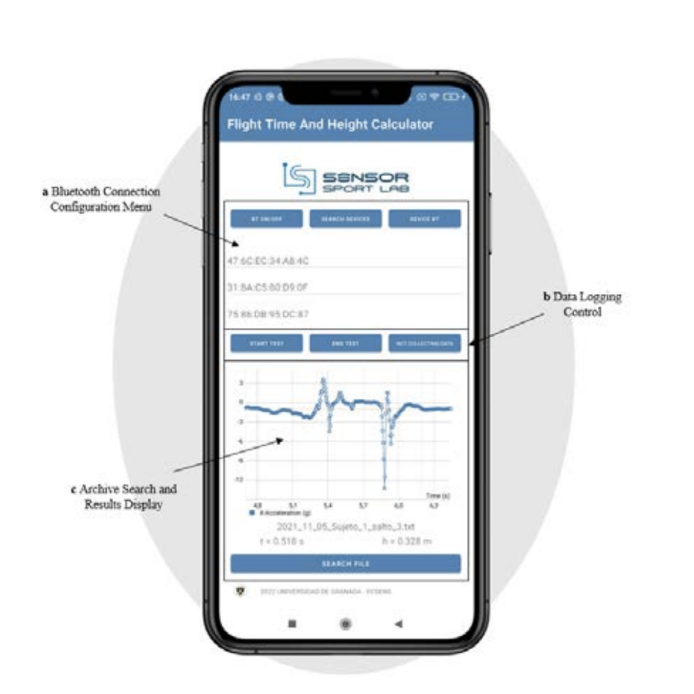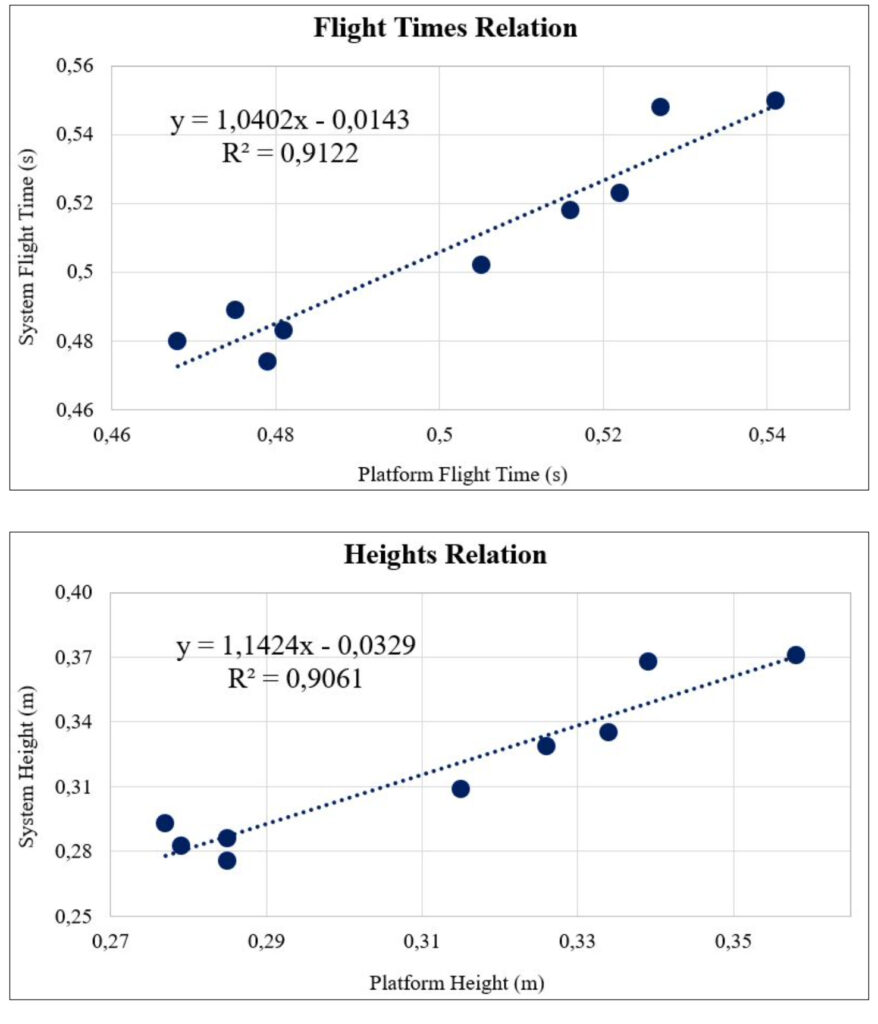MONITORING OF JUMPS WITH AN AD-HOC INERTIAL SYSTEM
INTRODUCTION AND MOTIVATION
Jumps can be an indicator of physical ability and the state of fatigue.
The main goals are to obtain an accurate measurement of jump performance using a low-cost and fully portable system.
The design is based on an inertial system, where the data are collected and processed using an ad-hoc developed application running on a smartphone.
MATERIAL AND METHODS
Facilities, equipment and methods
Systems used for measurements: Gold standard: Force platform Kistler 9260AA6. Inertial system used in the design: 9DoF Razor IMU M0. (with 3-axis accelerometer)
The study was carried out within the IMUDs facilities University of Granada.
The studied jump technique is the Counter Movement Jump (CMJ)
System features
Registers the acceleration of the axis of interest within the range of +/-16 g at a sampling rate of 200 Hz.
Capable of Bluetooth communication through the low energy BT protocol (BM78 module integrated)
Lithium- polymer battery of 450 mAh that provide power autonomy higher than 3 hours.
SD card that allows data storage.
Total weight of 47 g.
Data processing in a smartphone application.
Specific Objectives
Trial with a larger number of athletes for talent detection (100%).


MEASURING REACTION TIME (IN PROGRESS)
With the system designed for measuring reaction time, the specific objective aimed to achieve was:
Determining reaction time for athletes in various sports (70%).
To accomplish this, the previous electronics were modified by adding a buzzer to emit an auditory stimulus, and a mobile application was developed.

(A) Inertial system with buzzer. (B) Application interface for reaction time detection. (a) Bluetooth connection menu. (b) Communication menu with the system. (c) Results display. (d) Quick control menu.
In order to create the system, a setup with a high-speed accelerometer and a stimulus that the subject could receive and respond to was needed. The phone connects via Bluetooth to the inertial measurement system, the “start” button (see Figure 8B) is pressed, and after a random delay of 0 to 1.5 seconds, the IMU emits a short, powerful sound and measures the subject’s reaction time through a significant acceleration change. The time elapsed between the sound emission and the recording of the acceleration increase is sent to the mobile phone, instantly displaying the reaction time in seconds to the subject, along with a color code (from green to red) indicating the speed of the response.
Currently, the system requires a validation process, which will be conducted using high-speed cameras.
Specific Objectives
Trial with a larger number of athletes for talent detection (100%).
The system validation study has been completed and published in the Sensors journal, which is in the second quartile: https://www.mdpi.com/1424-8220/23/13/6022
The inertial system is placed at the waist, as shown in Figure, and it connects to the smartphone via Bluetooth. After performing the jump, the smartphone displays the flight time and the achieved height on the screen. For this application, the previous electronics were used since only the accelerometer is required.

System developed for calculating jump flight time and height.
RESULTS AND CONCLUSIONS
The level of agreement of the data has been checked studying the linearity of the platform data against the system data.
The perfect result would be a a straight line with slope 1 and origin at 0 (with an R2 coefficient of 1 that indicates perfect adjustment of data), and the obtained are:

Error between the measurements of the gold standard with respect to those of the system , taken the data in absolute value , is 1,53% for the flight time and 3,63% for the height reached.
Repeatability has also been proven , getting a maximum difference of 4% a nd 8% of each of the data relative to the mean of the each trial for the flight time and height respectively.

CONCLUSIONS
The proposed system presents promising capabilities, and it is expected to be applied in field trials. Work is currently conducting a validation trial with a larger number of subjects.

PEOPLE AND INSTITUTIONS INVOLVED
Juan A. Moreno-Pérez1
Isidoro Ruiz-García1
Ismael Navarro-Marchal2
Alberto J. Palma1
Pablo J. Gómez-López2
Miguel A. Carvajal1
1 ECsens, Department of Electronics and Computer Technology, Sport and Health University Research Institute (iMUDS-UGR), Research Centre for Information and Communications Technologies (CITIC-UGR), University of Granada, 18071 Granada, Spain.
2 SkiingLab, iMUDS, Department of Physical and sport education, Sport and Health University Research Institute (iMUDS-UGR), University of Granada, 18007 Granada, Spain.
This work was partly supported by Consejo Superior de Deportes through projects Project: “SensorSportLab III”, (Redes de Investigación en Ciencias del Deporte 2024) by Consejo Superior de Deportes (Ministerio de Cultura y Deporte), and European Regional Development Funds (ERDF).





